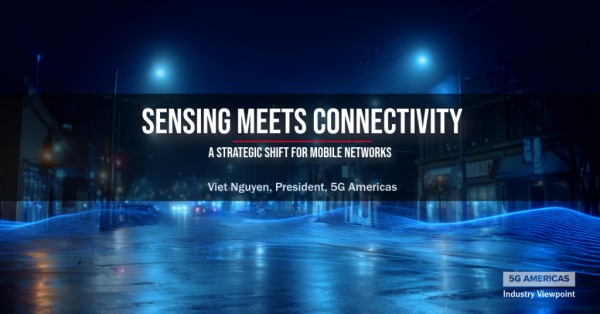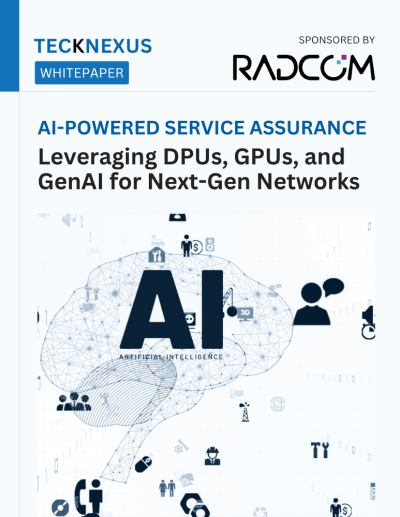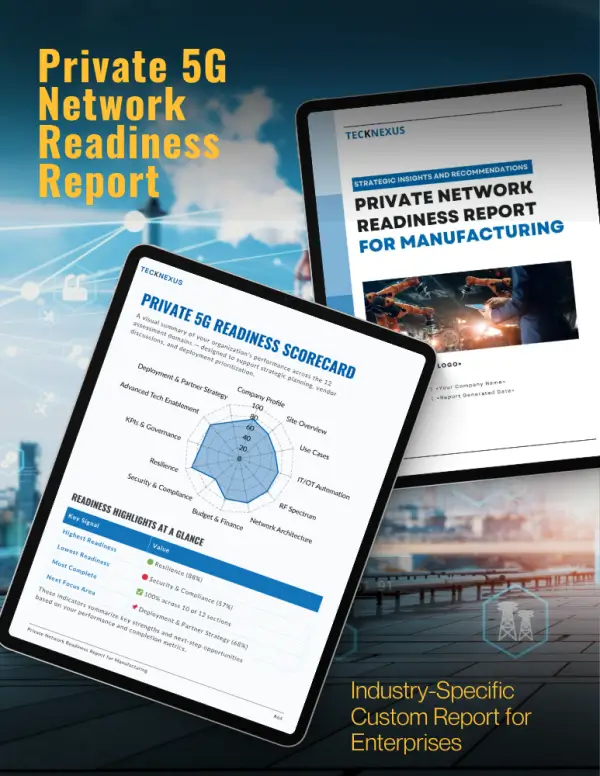The Dawn of AI in Telecom: A New Era Begins
The telecommunications industry stands on the brink of a revolutionary transformation, heralded by the rapid integration of Artificial Intelligence (AI) and Generative AI (GenAI) technologies. This evolution is not merely a trend but signifies a paradigm shift, poised to redefine the boundaries of connectivity, data processing, and digital innovation at large. With AI’s deepening roots in telecommunications, we are witnessing the dawn of an era where every piece of telecom gear—ranging from the smallest sensors to the vast networks of data centers—is becoming smarter, more responsive, and increasingly autonomous.
The significance of this shift cannot be overstated. The International Data Corporation (IDC) and insights from industry leaders like NVIDIA have highlighted a future where the demands for telecom gear are not just growing; they are evolving, driven by the sophisticated needs of AI-driven applications and services. This shift is catalyzing an unprecedented growth in the telecom gear sector, underpinned by the necessity for advanced data processing capabilities and enhanced connectivity solutions.
The purpose of this article is to delve into the heart of this transformative journey, exploring the pivotal role of telecom gear as the epicenter of the imminent AI explosion. By weaving together insights from recent studies, industry forecasts, and expert opinions, we aim to illuminate how the synergy between AI, GenAI, and telecom gear is not just shaping the future of telecommunications but is also setting the stage for a new era of technological advancement and digital connectivity. Through this exploration, we seek to understand the dynamics, opportunities, and challenges at the intersection of AI technologies and telecom infrastructure, providing a comprehensive outlook on what lies ahead for the industry.
AI-Powered Telecom Gear: Reshaping Connectivity
The telecommunications sector is undergoing an unparalleled transformation, primarily fueled by the advent and integration of Artificial Intelligence (AI) into its core infrastructure. This revolution is not just about enhancing the efficiency of telecom services; it’s about reimagining the role of telecom gear in a hyper-connected, AI-driven world. The current landscape, characterized by rapid technological advancements and increasing demands for better connectivity and processing capabilities, sets the stage for a future where telecom gear is the cornerstone of digital innovation.
The heart of this transformation lies in the way telecom equipment—ranging from routers and switches to base stations and antennas—is being re-engineered to leverage AI technologies. These advancements are not merely incremental; they represent a fundamental shift towards intelligent, autonomous systems capable of self-optimization, predictive maintenance, and enhanced security measures, all aimed at supporting the complex demands of modern telecommunications networks.
The International Data Corporation (IDC) provides key insights into this growth trajectory, highlighting the profound impact of AI on the telecom gear sector. According to IDC, the integration of AI is set to catalyze significant growth in the demand for data centers, networking equipment, and smartphones, with a notable surge expected over the next five years. This growth is primarily driven by the deployment of 5G technology, which itself is a significant consumer of AI capabilities, from network optimization to real-time data analytics.
IDC’s forecasts illuminate a future where the semiconductor market, closely tied to the telecom gear sector, is expected to see robust growth. This expansion is underpinned by an anticipated increase in the volume of connected edge devices, which are becoming the primary conduits for AI traffic. The demand for AI inferencing capabilities, which allow data to be processed and analyzed closer to where it is generated, is leading to a reevaluation of data center capacities and the overall architecture of telecom networks.
Moreover, the IDC highlights a projected 20% growth in the global semiconductor market this year, followed by an additional 14% growth in 2025. This remarkable expansion underscores the vital role of AI in driving demand for telecom gear, with a specific spotlight on the burgeoning need for communications network chips. Such chips are expected to see a market value of approximately $61 billion this year alone, marking a significant 13.5% increase from previous forecasts.
This AI-driven revolution in telecom gear is not just about meeting current demands; it’s about preparing for the future. As telecom gear becomes increasingly AI-centric, the industry is setting the foundation for a new era of connectivity, where the efficiency, reliability, and intelligence of telecommunications networks are dramatically enhanced. The insights from the IDC underscore the significant, transformative impact AI is having on the telecom gear sector, heralding a future where AI is not just an auxiliary technology but the central pillar of telecommunications infrastructure.
AI and GenAI: Transforming Telecom From Within
The integration of Artificial Intelligence (AI) and Generative AI (GenAI) into telecommunications gear marks a significant pivot in the industry’s evolutionary journey. This transformative shift is not merely about enhancing the efficiency or capabilities of telecom equipment but is fundamentally altering how telecommunications services are delivered, experienced, and innovated.
Table 1: Telecom vs. AI vs. GenAI Capabilities in Telecommunications
| Capability | Telecom | Artificial Intelligence (AI) | Generative AI (GenAI) |
|---|---|---|---|
| Network Optimization | Basic network management and troubleshooting | Predictive analytics for network performance improvement | Dynamic network configuration and optimization based on real-time data |
| Customer Service | Traditional call centers and manual support | Chatbots for instant responses; AI for customer behavior analysis | Generative chatbots that provide personalized solutions; creation of new customer interaction methods |
| Data Processing | Standard data handling and storage | Advanced data analytics for insights generation | Automated content creation; sophisticated data interpretation and prediction models |
| Security | Basic security protocols | AI-driven threat detection and response | Predictive security measures; simulation of potential security threats |
| Service Personalization | Limited to manually segmented customer groups | Personalized services based on user data and behavior analysis | Highly personalized and dynamic content and service generation for individuals |
AI in Telecom Gear: On-Device Processing and Beyond
The embedding of AI directly into telecom devices, including smartphones, routers, and IoT devices, signifies a departure from the traditional cloud-centric processing of data. This move towards on-device AI processing is revolutionary, offering numerous advantages such as reduced latency, enhanced privacy, and the ability to provide personalized services without the constant need for internet connectivity. For consumers, this means smarter devices capable of understanding and predicting user needs in real-time, from predictive text and voice recognition to sophisticated camera functionalities that adjust settings for optimal photos based on the environment and subjects.
On-device AI processing in telecom gear also opens the door to more advanced applications such as real-time language translation, augmented reality (AR) experiences, and enhanced security features that can detect and respond to threats without the need to consult central servers. This shift is crucial for the proliferation of 5G technology, where the ultra-low latency and high bandwidth capabilities are fully leveraged to provide next-generation services and experiences.
The Role of GenAI in Telecom Services
Generative AI technologies, particularly those powering large language models and creative content generation, are beginning to play a pivotal role in transforming telecom services. In network operations, GenAI can predict and manage network loads, optimize routing, and preemptively address maintenance issues before they impact service. This predictive capacity not only enhances network efficiency and reliability but also reduces operational costs.
In customer service, GenAI is revolutionizing the way telecom companies interact with their customers. Chatbots and virtual assistants, powered by GenAI, can handle a wide range of customer queries and issues, providing personalized, efficient service round the clock. These AI-driven systems learn from each interaction, continuously improving their ability to resolve customer issues more effectively and efficiently.
Furthermore, GenAI is facilitating new services and content creation, enabling telecom companies to offer unique, value-added services. From generating personalized content recommendations to creating virtual environments for digital interaction, GenAI is expanding the horizon of what telecom services can provide to their customers.
In short, the integration of AI and GenAI into telecom gear is acting as a catalyst for widespread change across the industry. By moving AI processing closer to the edge and harnessing the capabilities of GenAI, telecom companies are not only enhancing the performance and efficiency of their networks and services but are also opening up new avenues for innovation and customer engagement. This shift towards a more intelligent, responsive, and personalized telecom landscape is setting the stage for the future of digital communication, redefining what is possible in the realm of telecommunications.
The Growing Demand for AI-Enhanced Telecom Gear
The telecommunications industry is experiencing a significant surge in demand, particularly in the sectors of semiconductor manufacturing and data center expansion, primarily fueled by the rapid growth of Artificial Intelligence (AI) and Generative AI (GenAI) applications. This surge is not merely a reflection of an industry scaling up to meet current needs but an indication of a seismic shift towards an AI-driven future. The International Data Corporation (IDC) forecasts and industry insights provide a comprehensive view of this burgeoning demand, underscoring the expanding role of telecom gear in the digital ecosystem.
Semiconductor Market Growth Driven by AI
The semiconductor market, critical for the manufacturing of telecom gear, is projected to witness robust growth. IDC’s forecasts highlight a significant upward trajectory in this sector, attributed largely to the demands of AI and GenAI technologies. Semiconductors serve as the backbone for AI computing, from data centers that process vast amounts of information to edge devices that rely on AI for real-time processing. The growth in this market is indicative of the increasing incorporation of AI capabilities into telecom gear, necessitating more advanced and efficient chips.
AI and GenAI applications require substantial computing power, driving the need for semiconductors that can support high-performance processing while maintaining energy efficiency. This demand spans across data centers, which are becoming increasingly AI-centric, to smartphones and IoT devices that incorporate on-device AI processing. The IDC’s forecast of a 20% growth in the semiconductor market reflects the critical role of AI in shaping future demands, emphasizing the need for chips that can cater to the sophisticated requirements of AI-driven applications.
Data Centers at the Heart of AI Expansion
Data centers are experiencing a parallel surge in demand, largely due to the exponential growth of AI and GenAI applications. These applications necessitate vast data processing capabilities, storage, and networking infrastructure, making data centers pivotal in the AI-driven landscape. The IDC projects a 45% surge in data center growth, highlighting the shift towards more AI-centric operations. This growth is not just in scale but also in the sophistication of data centers, evolving to accommodate the specific needs of AI processing, such as enhanced computational power and energy efficiency.
The Rise of Connected Edge Devices
The expected doubling in the volume of connected edge devices from 2022 to 2027 further illustrates the expanding role of telecom gear. These devices, ranging from smartphones to IoT sensors, are increasingly becoming conduits for AI traffic. AI inferencing, which involves executing AI models to make decisions based on data, is a critical function of these edge devices. By processing data locally, these devices can offer real-time insights, decisions, and actions, enhancing the capabilities and efficiency of telecom services.
The integration of AI inferencing in edge devices signifies a shift towards decentralized AI processing, reducing reliance on cloud-based data centers and mitigating latency issues. This trend not only enhances the user experience by providing faster and more reliable services but also opens new possibilities for AI applications in areas with limited connectivity.
In short, the surge in demand for semiconductor markets and data centers, coupled with the increase in connected edge devices, underscores the expanding role of telecom gear in the AI-driven future. The IDC’s forecasts illuminate the trajectory of growth driven by AI and GenAI technologies, reflecting a telecommunications industry gearing up for an era of unprecedented innovation and connectivity. As telecom gear evolves to meet these demands, the industry stands at the cusp of a transformative era, poised to redefine digital communication and services.
AI’s Impact: Beyond Telecom into Global Industries
The integration of Artificial Intelligence (AI) and Generative AI (GenAI) technologies into telecommunications gear is not only revolutionizing the telecom industry but also exerting a profound influence across a broad spectrum of other industries. This cross-industry impact underscores the versatile and transformative power of AI, as it becomes a cornerstone of digital innovation and operational excellence in various sectors.
Cross-Industry Influence of AI Integration
The telecommunications sector’s pioneering adoption and integration of AI and GenAI technologies are setting a precedent that numerous other industries are following. According to findings from the International Data Corporation (IDC), the widespread incorporation of AI into telecom gear is catalyzing an increased demand for AI capabilities across sectors such as healthcare, finance, retail, and manufacturing. This is largely due to the enhanced connectivity, improved data processing capabilities, and advanced analytical tools that AI-enabled telecom infrastructure provides.
Healthcare
In healthcare, the integration of AI in telecom gear facilitates telemedicine services, remote patient monitoring, and the real-time analysis of health data. This has not only improved patient care but also made healthcare services more accessible and efficient. AI-driven predictive models, supported by robust telecom networks, are enabling early detection of diseases and personalized treatment plans, showcasing the critical role of telecommunications in advancing medical science.
Finance
The finance sector benefits from AI’s integration into telecom through enhanced security, fraud detection, and personalized customer service. AI algorithms can analyze transaction patterns in real-time to identify and prevent fraudulent activity, while AI-powered chatbots and virtual assistants offer personalized financial advice and customer support, driven by the seamless connectivity and data processing capabilities of modern telecom infrastructure.
Retail
In retail, AI and GenAI technologies are reshaping customer experiences through personalized marketing, inventory management, and e-commerce operations. The robust data transmission and processing capabilities of AI-integrated telecom gear enable retailers to understand and predict consumer behavior, optimize supply chains, and offer tailored shopping experiences, both online and in-store.
Manufacturing
For the manufacturing industry, AI-enhanced telecom gear facilitates the implementation of the Internet of Things (IoT) and smart factories, where machines communicate and learn from each other to optimize production processes. This leads to increased efficiency, reduced downtime, and the ability to predict maintenance needs before breakdowns occur, all enabled by the high-speed, reliable connectivity provided by AI-driven telecommunications networks.
Implications for Digital Transformation
The IDC survey findings highlight that the adoption of AI and GenAI technologies is pivotal for digital transformation across industries. By providing the infrastructure for advanced data analytics, real-time decision-making, and enhanced connectivity, AI-integrated telecom gear is not just a tool for operational efficiency but a strategic asset that can drive innovation, competitive advantage, and industry transformation.
In short, The influence of AI’s integration with telecom gear extends far beyond the telecommunications industry, driving digital transformation and operational excellence across multiple sectors. As industries continue to recognize and leverage the potential of AI and GenAI, supported by advanced telecom infrastructure, we can expect to see an acceleration in innovation, efficiency, and service quality across the global economy. This cross-industry impact of AI underscores the importance of telecommunications as the backbone of modern digital infrastructure, enabling a more connected, intelligent, and efficient future.
Riding the GenAI Wave in Telecom
Navigating the wave of Generative AI (GenAI) within the telecommunications sector marks a pivotal shift towards a future where innovation, efficiency, and enhanced customer engagement are at the forefront. Insights from NVIDIA’s survey on AI in telecommunications provide a comprehensive look into how GenAI is not just transforming the industry but also setting new benchmarks for success.
GenAI’s Role in the Telecom Industry
Generative AI is rapidly emerging as a cornerstone technology in telecommunications, redefining the possibilities for network optimization, service delivery, and customer interaction. The technology’s ability to generate new content, simulate user interactions, and predict network anomalies is revolutionizing how telecom companies operate and engage with their customers. According to NVIDIA’s survey, a significant portion of telecom professionals now recognize the value of GenAI, with investments in the technology growing at an unprecedented pace.
Competitive Advantages
The adoption of GenAI technologies offers telecom companies a distinct competitive advantage. By leveraging GenAI, telecom operators can enhance their network efficiency, predict maintenance needs before they become critical, and provide personalized services at scale. This not only improves operational efficiency but also significantly enhances customer satisfaction. The survey findings indicate a growing acknowledgment within the industry of AI’s role as a key differentiator, with a majority of respondents viewing GenAI as crucial to their future success.
Investment Trends
Investment in GenAI within the telecom industry is on the rise, with companies allocating significant resources to explore and implement AI solutions. The NVIDIA survey highlights a trend of increasing investment in AI, with a notable percentage of companies having invested over $1 million in the previous year. This trend is expected to continue, with a focus on developing AI infrastructure, software, and services that can support the scalable deployment of GenAI applications. These investments are not only a testament to the perceived value of GenAI but also an indication of the long-term commitment of the telecom industry to harness the potential of AI technologies.
Focus on Customer Experience
At the heart of the telecom industry’s interest in GenAI is the desire to improve customer experience. The NVIDIA survey underscores this, with a significant portion of respondents indicating that enhancing customer service is their primary goal for adopting AI technologies. GenAI is particularly effective in personalizing customer interactions, streamlining service delivery, and offering innovative services that meet the evolving needs of consumers. From AI-driven chatbots that provide instant customer support to personalized content recommendations, GenAI is enabling telecom companies to elevate the customer experience to new heights.
In short, the GenAI wave in telecommunications is more than just a technological shift; it represents a strategic move towards more innovative, efficient, and customer-centric operations. As highlighted by NVIDIA’s survey, the telecom industry’s embrace of GenAI is driving competitive advantages, influencing investment trends, and sharpening the focus on customer experience. As telecom companies continue to navigate this wave, the role of GenAI will undoubtedly expand, further transforming the landscape of telecommunications and setting new standards for what is possible in the digital age.
Investing in Telecom’s AI Future: The Role of Partnerships
As the telecommunications industry accelerates its journey into the future, driven by Artificial Intelligence (AI) and Generative AI (GenAI), understanding the evolving investment landscape and the strategic importance of partnerships becomes crucial. This new era is not only about technological innovation but also about forging collaborations that can amplify the impact of AI on telecom services, infrastructure, and ultimately, on the customer experience.
Current Investment Trends in AI
The telecom sector is witnessing a significant surge in investments directed towards AI and GenAI technologies. These investments are multifaceted, targeting the development of advanced AI models, enhancement of network infrastructure to support AI operations, and creation of new AI-driven services. According to insights from industry reports and surveys, there’s a notable trend towards increasing the budget allocations for AI projects, with a focus on both short-term gains in operational efficiency and long-term strategic advantages.
Telecom companies are investing heavily in AI to streamline network operations, enhance data analytics capabilities, and improve service delivery. These investments are expected to yield substantial benefits, including:
- Revenue Growth: By enabling the introduction of innovative services and improving customer retention through personalized experiences, AI investments drive revenue growth. AI’s ability to predict customer preferences and deliver tailored services creates new monetization opportunities.
- Cost Reductions: AI technologies are instrumental in automating operations, reducing manual intervention, and optimizing network performance. This leads to significant cost savings in maintenance, customer service, and network management.
The Importance of Partnerships
In the rapidly evolving telecom landscape, partnerships and collaborations are emerging as key strategies for leveraging AI’s full potential. These partnerships can take various forms, including collaborations with AI technology providers, research institutions, and other telecom companies.
- Developing AI Solutions: Collaborating with AI technology providers allows telecom companies to access cutting-edge AI tools and platforms, accelerating the development of innovative solutions. These partnerships can help in customizing AI models to suit specific telecom needs, from network optimization to customer service enhancement.
- Infrastructure Enhancement: Building AI-ready infrastructure requires substantial investment and expertise. Partnerships with infrastructure providers and technology companies enable telecom operators to upgrade their networks and data centers to support AI operations efficiently.
- Compliance and Security: As AI applications in telecom involve handling vast amounts of data, including sensitive customer information, compliance with data protection regulations is paramount. Collaborating with legal and cybersecurity experts can help telecom companies navigate these challenges, ensuring that their AI implementations are secure and compliant.
- Knowledge Sharing and Innovation: Partnerships between telecom companies and academic or research institutions can foster innovation and lead to the development of new AI technologies. These collaborations can also facilitate knowledge sharing, helping to upskill the workforce and drive forward the industry’s overall AI capabilities.
In short, The investment landscape in the telecom sector is increasingly focused on harnessing the transformative power of AI and GenAI. As companies allocate more resources to AI initiatives, the role of partnerships in driving success becomes more pronounced. Collaborations across the ecosystem not only facilitate the development and implementation of AI solutions but also ensure that telecom operators can navigate the complexities of AI integration, from technical challenges to regulatory compliance. By investing strategically in AI and fostering robust partnerships, the telecom industry is positioning itself to reap the benefits of AI-driven innovation, efficiency, and customer satisfaction.
Embracing AI: Telecom’s Path Forward
As we stand on the cusp of a transformative era in telecommunications, the impending AI explosion heralds a future where the integration of Artificial Intelligence (AI) and Generative AI (GenAI) within telecom gear is not merely an enhancement but a necessity. The journey explored through the previous sections underscores the pivotal role of telecom gear in not only adapting to but also driving this technological revolution. The insights from the International Data Corporation (IDC), NVIDIA’s survey, and broader industry knowledge collectively paint a picture of an industry at the zenith of a significant transformation.
Telecom gear, from the smallest components to the most complex networks, is the foundation upon which the AI-driven future will be built. It serves as the critical infrastructure enabling the seamless operation, deployment, and advancement of AI and GenAI technologies. As these technologies continue to evolve and become more ingrained in telecommunications, the gear that powers our networks must not only support but also enhance their capabilities. This means telecom equipment must be smarter, more efficient, and more adaptable than ever before.
The integration of AI into telecom gear brings forth unparalleled opportunities for innovation, operational efficiency, and customer satisfaction. On-device AI processing, advanced network management through GenAI, and the development of AI-driven services are just the tip of the iceberg. The benefits, including enhanced network reliability, personalized customer experiences, and new service offerings, highlight the transformative potential of AI in telecommunications.
However, with great potential comes the need for significant adaptation and innovation. The telecom industry must embrace a forward-thinking mindset, ready to explore and invest in the next generation of telecom gear. This involves not only financial investments but also a commitment to research, development, and collaboration across the ecosystem. Partnerships with technology providers, academia, and other stakeholders will be crucial in navigating the complexities of AI integration and harnessing its full potential.
Moreover, as the industry moves forward, it must also address the challenges associated with AI, including ethical considerations, data privacy, and security. Developing AI solutions that are not only technologically advanced but also responsible and compliant with global standards will be key to sustainable growth.
In conclusion, the telecom industry is at a turning point, with AI and GenAI technologies poised to redefine the landscape. As telecom gear becomes the epicenter of the imminent AI explosion, the industry’s ability to adapt, innovate, and collaborate will determine its trajectory in the AI-driven future. The journey ahead is filled with challenges, but also abundant with opportunities for those ready to lead the charge into the next frontier of telecommunications.
























